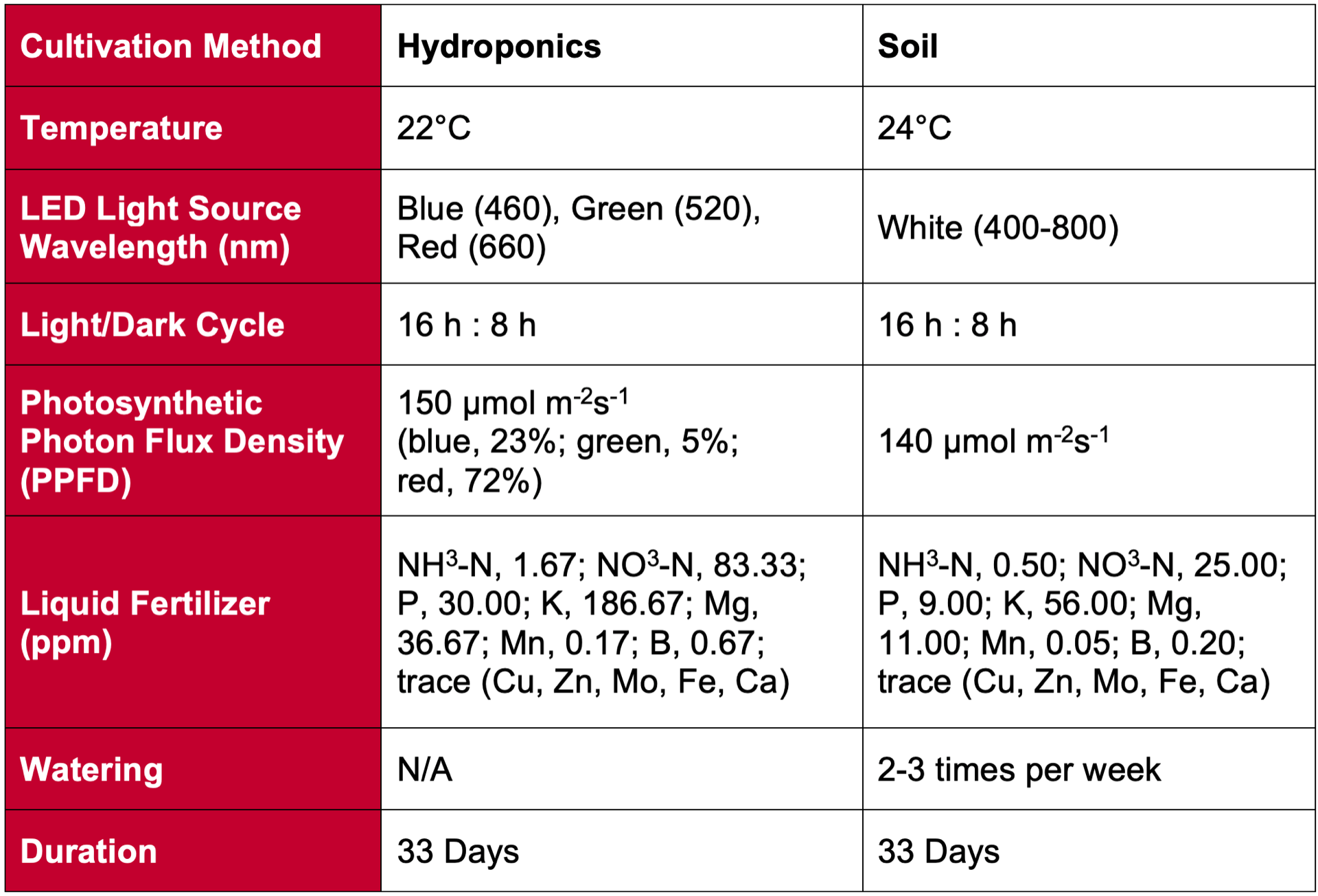Citation
Meng, Q., J. Boldt, and E.S. Runkle. 2020. Blue radiation interacts with green radiation to influence growth and predominately controls quality attributes of lettuce. Journal of the American Society for Horticultural Sciences 145(2):75-87. https://doi.org/10.21273/JASHS04759-19
With recent shifts in modern agriculture to more urban environments, indoor farming has become increasingly popular. Such an environment allows growers to control everything from air flow to water. Arguably the most important aspect that can be controlled is lighting, specifically with the use of light-emitting diodes (LEDs) that allow for customizable wavelengths for varying stages in a plant’s life cycle. Research has shown that different wavelengths can produce different results. For instance, exposing certain varieties of lettuce to blue radiation (400-500 nm) has been tied to a significant reduction in biomass weight, as well as an increase in the production of secondary metabolites. Growers will often combine blue with red and far-red radiation (600-800 nm) to achieve desired results. Green radiation (500-600 nm), however, does not have much of a history of being used by growers, despite its ability to penetrate deep into the leaves. This has huge implications on its ability to drive photosynthesis and has recently been studied as a substitute for blue radiation. Previous research on this subject has shown an increase in biomass of several lettuce varieties, but the authors believe this could have been attributed to the shifting levels of blue radiation. To combat this, they designed a new experiment to keep levels of blue radiation constant and substitute red radiation for green.
In this experiment, researchers focused on ‘Rouxai’ red leaf lettuce and tested the effects of varying wavelengths using LED lighting. During the light quality treatment phase of the experiment, each treatment had a 20 hour photoperiod and a total photosynthetic photon flux density (PPFD) of 180 μmol m-2 s-1 . They exposed the lettuce to nine different treatments of lighting, including combinations of blue and red radiation, as well as introducing green radiation at a photon flux density (PFD) of 60 μmol m-2 s-1 in place of a reduction in red radiation. Researchers measured biomass accumulation including fresh and dry mass, different morphological features such as plant diameter and leaf number, and coloration of the foliage. They found that at 20 μmol m-2 s-1 of blue radiation, the presence of 60 μmol m-2 s-1 green radiation increased the fresh mass of lettuce, but had negative effects on the weight at any higher levels of blue radiation. Additionally, an increase in blue radiation with 60 μmol m-2 s-1 of green radiation decreased leaf diameter, width, and length. With an increase in blue radiation, lettuce is known to have an increase in red color of the foliage. Without green radiation, the foliage became saturated at 20 μmol m-2 s-1 of blue radiation. However, with 60 μmol m-2 s-1 of green radiation, the saturation point increased to 60 μmol m-2 s-1 of blue radiation. This has interesting implications for growers wishing to increase the coloration of their foliage.
This study provides valuable information regarding the role green radiation may have in a plant’s life cycle. With an increase in fresh mass at low levels of blue radiation, incorporating green radiation at the right stages could potentially increase yield for growers. Additionally, the presence of green light has been shown to vary depending on the species and age of the crop, which implies further research is needed on the subject. Having this research and knowledge that green radiation influences photosynthesis and other varying characteristics of lettuce growth is critical for growers looking to optimize their lighting in controlled environments.
